15+ Types Dust Collector Structures and Working Principles
A dust collector refers to a device that separates and captures dust particles in the air through certain physical or chemical means. The use of dust collectors can effectively reduce the fine particulate matter in polluted air, protect the environment, and thus reduce the probability of people consuming harmful substances, protecting human health. Dust collectors used in industry can be divided into two categories: dry dust collectors and wet dust collectors.

Dry Dust Collector
A dry dust collector is a dust collector that does not require water. More than 90% of the dust removal systems use dry dust collectors, which have a wide range of applications and discharge dust in the form of dry powder, which is conducive to centralized treatment and overall utilization; Disadvantages: The toxic (harmful) components in the gas cannot be removed, and improper handling can easily lead to secondary dust.
1. Gravity Dust Collector 
The structure of a gravity dust collector mainly consists of a chamber body, an air inlet, an air outlet, and an ash collection hopper.
The dust removal principle of a gravity dust collector is to suddenly reduce the airflow velocity and change the flow direction. Under the action of gravity and inertia force, larger particles of dust separate from the gas and settle at the bottom of the dust collector cone. Belongs to coarse dust removal.
2. Inertia Dust Collector
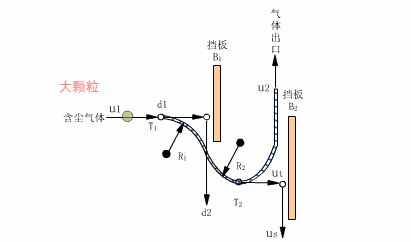
The inertial dust collector is composed of a cylindrical cylinder and a dust removal device.
Working principle: By utilizing the difference in inertial forces between dust and gas in motion, dust is separated from the gas. It is suitable for high temperature and high air flow conditions, with particle concentration<100g/m3 and particle size>10 μ Separate the particles of m.
Usually, obstacles are placed in front of dusty airflow, causing a sharp change in the direction of the airflow. At this point, due to the inertia force of the dust being much greater than that of the gas, the dust particles are separated from the airflow and the purified gas is discharged after a sharp change in direction.
3. Collision Type Inertial Dust Collector
A collision type inertial dust collector is a device that installs one or more baffles along the airflow direction, and the dusty gas collides with the baffles to separate the dust particles from the gas. The higher the speed of the gas before hitting the baffle, the lower the speed after collision, and the less dust it carries, resulting in higher dust removal efficiency.
4. Rotary Inertia Dust Collector

The rotary inertia dust collector is a device that causes the dusty gas to change direction multiple times, separating the dust during the turning process. The smaller the curvature radius of the gas turning. The more turning speed, the higher the dust removal efficiency.
5. Louver Settling Inertial Dust Collector

The louver type inertial dust collector consists of a louver type ash barrier and a cyclone dust collector. The louver type ash barrier mainly concentrates dust particles and has two forms: conical and “V” shaped. The louvered inertial dust collector also utilizes sudden changes in direction of airflow to separate particulate dust from gas under the action of inertial force.
6. Cyclone Dust Collector
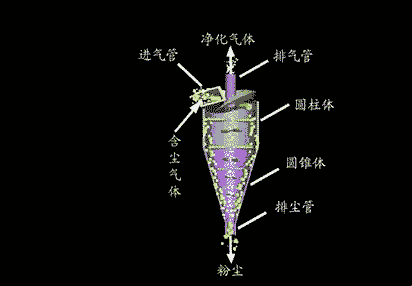
Structure: The cyclone dust collector is composed of a cylinder, a cone, an inner cylinder, an inlet duct, an exhaust duct, etc.
Working principle: The working principle of a cyclone dust collector is shown in the figure. Dust containing gas is introduced from the inlet into the shell and exhaust pipe of the dust collector, forming a rotating downward external vortex.
The dust suspended in the outer vortex moves towards the wall of the dust collector under the action of centrifugal force, and then moves to the lower part of the dust collector along with the outer vortex, and is discharged through the dust discharge hole. The purified gas forms an ascending internal vortex and is discharged through the outlet.
7. Bag Dust Collector
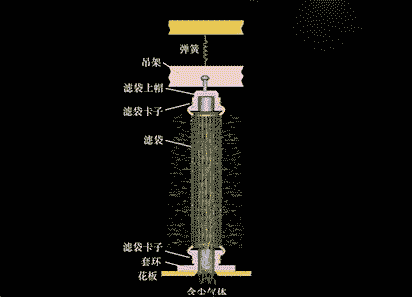
Structure: The bag dust collector is composed of a bag, a shell, an ash hopper, an ash discharge device, a bracket, a pulse cleaning system, etc.
Working principle: When dusty gas enters the dust collector from the air inlet, it first touches the inclined partition in the middle of the air inlet, and the airflow turns to flow into the ash hopper. At the same time, the airflow speed slows down. Due to inertia, coarse particles of dust in the gas directly fall into the ash hopper, playing a role in pre dust collection.
The airflow entering the ash hopper then bends upwards and passes through the filter bag with a metal skeleton inside. The dust is captured and collected on the outer surface of the filter bag, and the purified gas enters the cleaning room at the upper part of the filter bag room, where it is collected and discharged through the air outlet duct.
8. Static Electricity Dust Collector
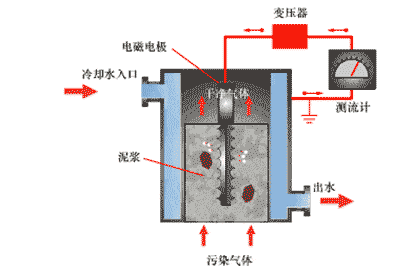
Structure: The electrostatic precipitator is composed of an intake smoke box, a positive and negative electrode plate, a flow equalization plate, a purification chamber, a cloth bag, an ash hopper, etc.
Working principle: When dusty gas passes by, the electrostatic precipitator will generate corona discharge, causing the dusty gas to carry a positive charge. Then, under the action of electric field force, positively charged dusty gas will adsorb on the cathode plate.
By regularly striking the cathode plate, dust containing gas can fall into the ash hopper below the electrostatic precipitator, thereby removing dust.
9. Explosion Proof Dust Collector
 Due to the explosive dust of aluminum powder at a certain concentration, it is highly likely to explode or extinguish when encountering sparks or static electricity. In this case, an explosion-proof dust collector is required.
Due to the explosive dust of aluminum powder at a certain concentration, it is highly likely to explode or extinguish when encountering sparks or static electricity. In this case, an explosion-proof dust collector is required.
The explosion-proof dust collector, under the action of the main fan of the system, enters the dust containing gas from the inlet of the dust collector into the gas box of the dust collector for pre-treatment of the dust containing gas, and then enters each dust removal room of the upper box from the bottom.
Dust is adsorbed on the outer surface of the filter cartridge, and the filtered clean gas enters the clean air chamber of the upper box through the filter cartridge and collects at the air outlet for discharge.
10. Electrostatic Dust Collector
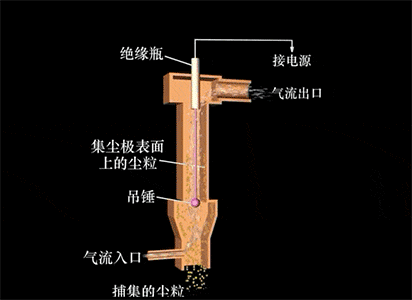
The exhaust duct or sealed cover of the equipment used in the electrostatic precipitator serves as the electrode plate, and a discharge electrode is installed inside the cover or pipe, which is connected to a high-voltage power source to form an electric field.
When dusty gas passes through an electric field, the dust gathers on the cover or pipe wall under the force of the electric field, and the purified gas is discharged through the exhaust duct.
Especially suitable for dust purification in crushing, screening workshops, sintering conveyor belts and other scattered dust points, as well as in mine tunnels and small boilers.
Wet Dust Collector
A wet dust collector, also known as a “water dust collector”, is a device that closely contacts dust containing gas with water and uses the inertial collision and other effects of water droplets and particles to capture or increase particles.
11. Spray Tower Dust Collector

In the spray tower, the dusty gas moves upwards, and the liquid sprays out from the nozzle and moves downwards. Due to the inertial collision, interception, and condensation between liquid and particles, larger particles are trapped by the liquid.
12. Venturi Dust Collector

Structure: Composed of a Venturi tube (consisting of a contraction tube, a throat tube, and an expansion tube) and a cyclone separator.
Working principle: Dust containing gas enters the contraction tube, and the flow rate gradually increases along the tube. The liquid is sprayed into the throat and atomized by high-speed airflow. The dust particles in the gas are lubricated after coming into contact with the liquid. After entering the expansion tube, the flow rate gradually decreases, and the dust particles adhere to each other, making them larger and easier to remove.
Finally, it enters the cyclone separator. Due to the centrifugal force, water and lubricated dust particles are thrown onto the inner wall of the separator and flow downwards out of the separator. The purified gas is discharged through the central pipe of the separator.
13. Impact Dust Collector

Working principle: Smoke enters from the inlet of the dust collector and impacts the water surface at a relatively high speed. Most of the dust particles remain in the water due to increased weight or adhesion with water, which is the impact stage.
After this stage is generated, the water surface will form a parabola shaped area of water droplets, water mist and foam due to the movement of gas, and the dusty gas will further purify water droplets and water mist in this area, which is a water bath stage.
When entering the equipment, the temperature of the flue gas is very high. Under the impact of the flue gas, water mist forms inside the cylinder. When the dust particles change direction and move upwards, they are further purified by the water mist. This stage is called atomization dust removal.
After purification through the above three methods, clean gas enters the chimney from the outlet of the impact water bath desulfurization dust collector.
14. Water Film Dust Collector
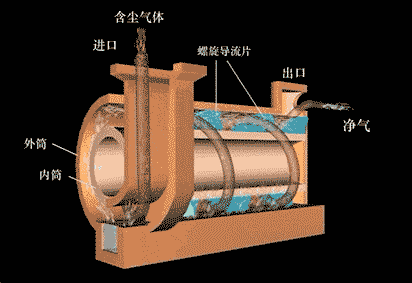
Working principle: Dusty gas is introduced from the lower part of the cylinder in a tangential direction, rotates and rises. Dust particles are separated by centrifugal force, thrown towards the inner wall of the cylinder, and are adsorbed by the water film layer flowing on the inner wall of the cylinder. With the water flow, it is discharged from the bottom cone through the dust discharge port.
15. Foam Dust Collector

Working principle: Dusty gas enters the lower cylinder through the air inlet and rapidly flips upwards. Due to inertia, larger dust particles separate from the airflow and fall into the lower cone. The upward airflow collides with the water entering from the water inlet through the sieve plate, and some dust particles are carried away by the water.
When the airflow passes through the holes on the sieve plate, the air and water are fully contacted, forming a boiling foam layer on the sieve plate, and most of the dust particles are washed. The purified gas is removed from the water mist through the water baffle and discharged through the exhaust port.
16. High Temperature Ceramic Dust Collector

The filtering components of ceramic filters are currently commonly made of high-density materials, and the ceramic filtering components mainly include rod type, pipe type, and cross flow type.
Working principle: Dust containing gas enters the filter from the short channel end, and then enters the longer clean gas end of the channel after filtering in each channel. One end of the clean gas channel is sealed, and the clean gas flows into the clean gas collection box. The dust particles captured in the short channel are regularly removed by reverse pulse airflow.

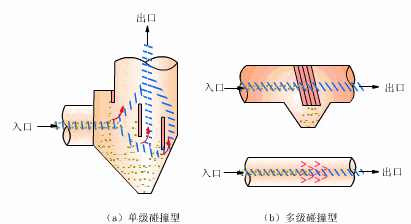
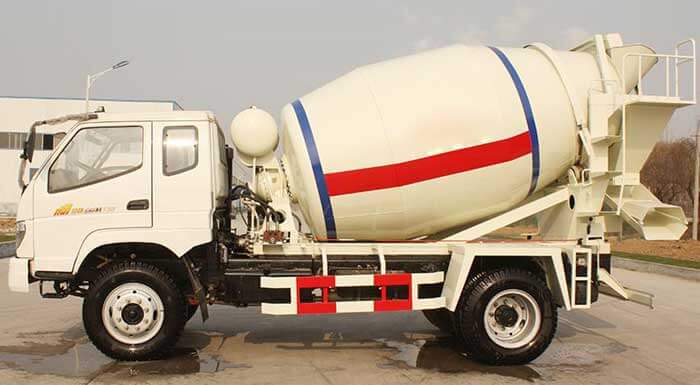 Concrete Mixer Truck Specifications, Types, Structures
Concrete Mixer Truck Specifications, Types, Structures Cyclone Separator Introduction | How To Choose
Cyclone Separator Introduction | How To Choose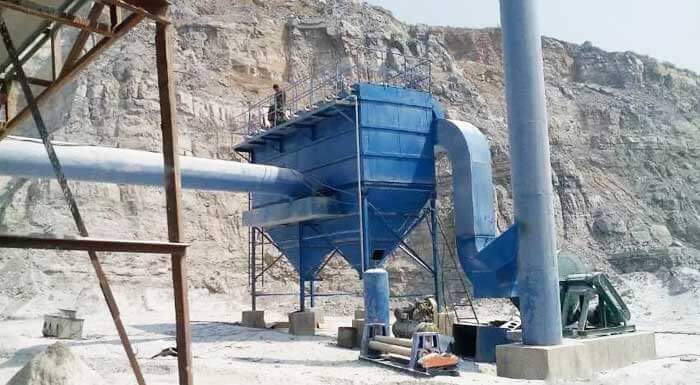 What Is Bag Filter | Bag Filter Types | How To Choose A Right Bag Filter
What Is Bag Filter | Bag Filter Types | How To Choose A Right Bag Filter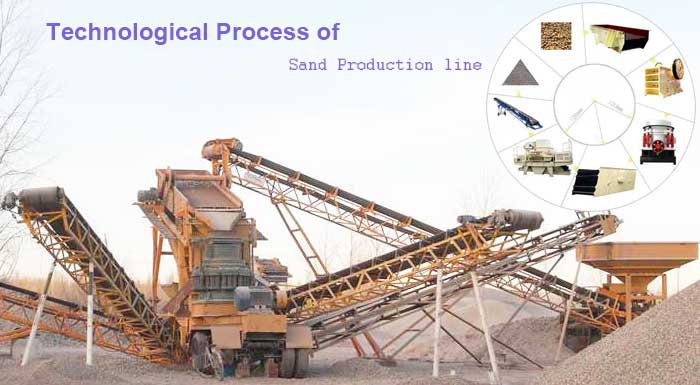 Top 10 Vibrating Screen Types & Working Principle [How To Choose]
Top 10 Vibrating Screen Types & Working Principle [How To Choose]

